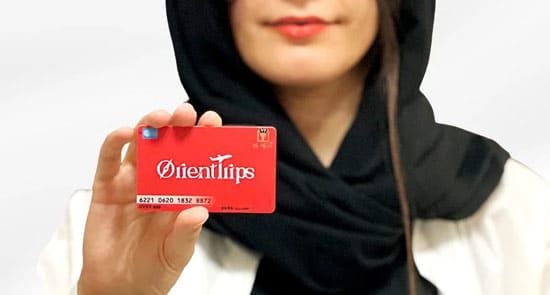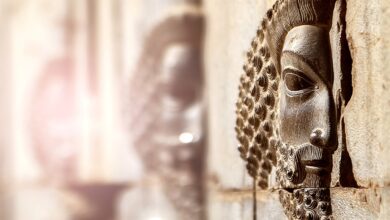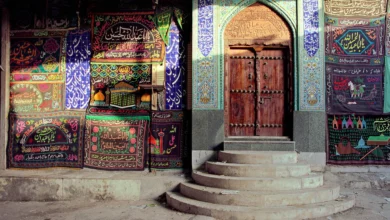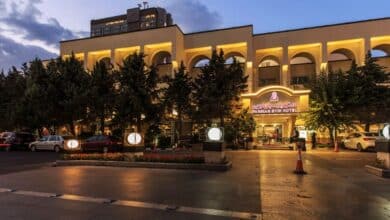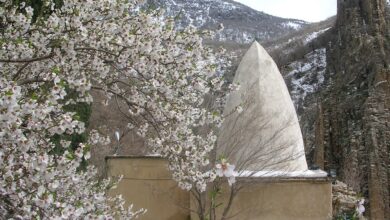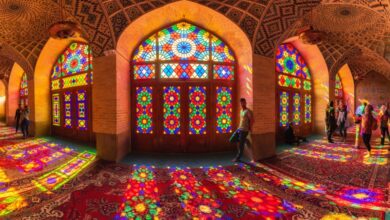Carpet Museum of Iran: Weaving Through History
Explore Centuries of Weaving Tradition
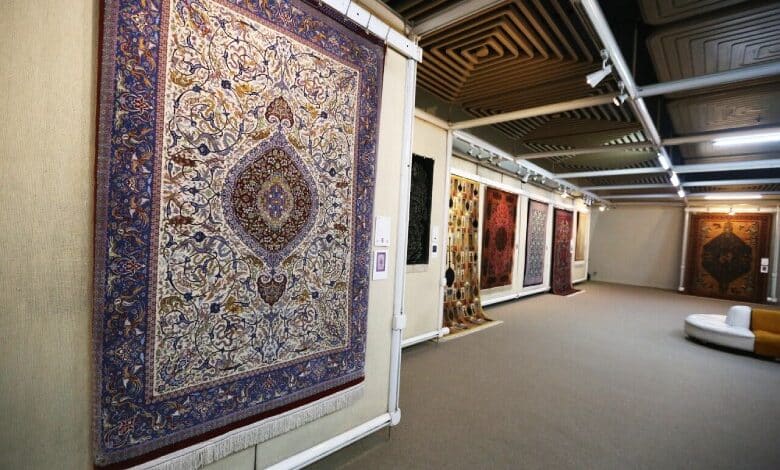
Iran has always been the center of attention for its ancient history, from the old jewels and crowns to the old carpets. Known for its carpets around the world, it’s not a wonder that a Carpet Museum should be dedicated to showing the hand art of Iranians from ancient to modern times. Built at the request of Queen Farah Pahlavi, the museum was inaugurated by her on February 11, 1978.
Every carpet has its own story, and the museum is built to tell us the story and wonders of each one. The fame of Persian carpets can be heard all over the world—an art industry whose name and prestige overshadow the culture of Iran, a legacy of skilled weavers who reflect the creation of God in their works. The main goal of the museum is to research the history and quality of the art and industry of carpets, especially Persian rugs.
If you are eager to know more about Iranian culture, handicrafts and especially Persian carpets, this museum can be a great source for you.
Contents
Find a Rich Collection of Persian Carpets
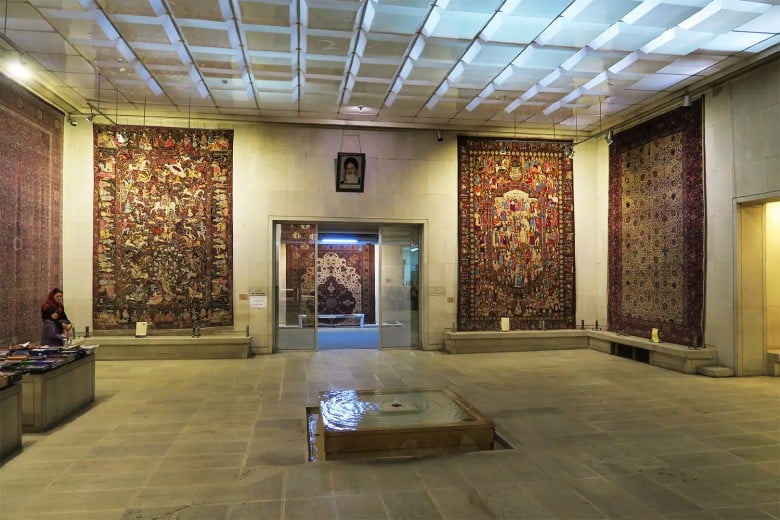
Visitors can see a variety of handmade kilims and carpets in the Carpet Museum based on their quality, age, and the unique features each one has. The carpets vary in color, design, patterns, and weaving techniques. There is also a diversity of the regional carpet with different designs and styles.
As we mentioned, the museum’s collection ranges from carpets belonging to the 17th century to modern times. It also includes some of the most valuable examples of Persian carpets. Combining both, the museum is a rich source of research for scholars and art lovers. 150 carpets and kilims woven by various carpet weavers from famous cities of Iran, such as Tabriz, Kashan, Kurdistan, Kerman, Isfahan, Khorasan, and others, are displayed in the ground-floor hall.
Historical Significance of Persian Carpets

Xenophon, the ancient Greek historian, in his book “Cyropaedia,” marvels at how the Persians spread carpets under their beds to make them soft. The Chinese “Sui Shu” annals from the Sasanian era also mention Iranian woolen carpets as an imported good in China.
The famous Baharestan Carpet in the Tisfun Palace is widely mentioned in post-Islamic literature due to its splendor, and it was considered one of the wonders of King Khosrow II‘s treasures. The world’s oldest known carpet, the 2,500-year-old Pazyryk Carpet, was discovered in southern Siberia in 1949 and is believed to have been woven in Iran during the Achaemenid era. It is evident that carpet weaving existed in Iran during the Achaemenid period and had undergone a long process of development by the 5th century BCE.
Each carpet displayed in this museum is made of 15 to 25 colors, each of them signifying a unique and special meaning. The patterns of each carpet are inspired by the feelings and beliefs of the weavers, and for that, each one tells a different story. If you have a question about how they turn their beliefs and culture into carpet, we can say that one of the sources was the natural surroundings of the weaver. For that reason, the carpet motifs may contain flowers, birds and other animals.
Structure of Carpet Museum of Iran

With an area of 3,400 square meters, the museum has two halls, one located on the ground floor, which is dedicated to a permanent exhibition, while the upper hall is used for temporary exhibitions of kilims and carpets. The building features elegant and striking architecture, with exterior decorations resembling a carpet-weaving loom. The designer of this beautiful structure was Abdol-Aziz Mirza Farmanfarmaian, a prominent Iranian architect whose portfolio includes the Niavaran Palace, Azadi Stadium, the Stock Exchange building, and many other significant and famous structures from the Pahlavi era.
Library of Carpet Museum of Iran
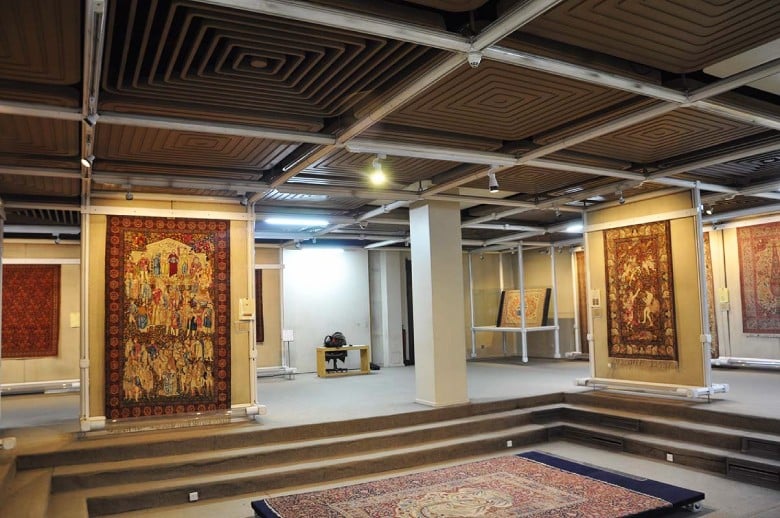
If you are a scholar or researcher, and even if you’re interested in learning more about Iranian carpets and kilims, you can visit the museum library. Approximately 3,500 books in Persian, Arabic, French, English, and German are available to delve into the meaning of colors and motifs used in different carpets. The museum’s objectives include research into the history, developments, and historical quality of the art and craft of carpet making, especially in Iran, the collection and acquisition of various examples of handwoven Iranian carpets, and the organization of temporary exhibitions of carpets from Iran and other parts of the world.
Other Interesting Parts of the Museum
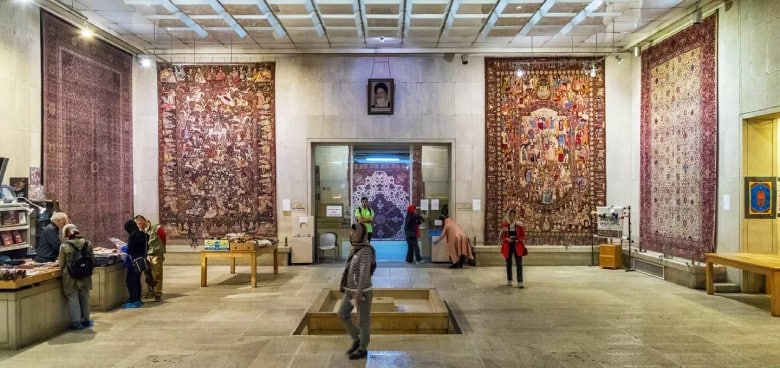
You can see some weavers sitting there in front of a loom and weaving a carpet in their own style. To encourage other people to do carpet and carpet weaving, there are also courses and classes held by professionals to teach more to the learners eager to know about this field. You can find relevant materials and tools, such as looms, dyed threads, needles, etc., there for a better understanding of how weavers work.
Book Iran Flights
Buy Iran flight tickets at the lowest price
Explore Iran’s culture and history with affordable and reliable flight tickets.
Conclusion
By visiting the National Carpet Museum of Iran, the door of ancient Iran with marvelous motifs and colors opens to you. If you are interested in the history of Iran and totally ancient cultures, the National Carpet Museum of Iran can be a great source of study for you. You can learn a lot about different cultures, histories and religions, as well as the meaning behind each motif used by weavers in carpets. We recommend you visit this museum and don’t miss the chance to learn.
FAQs of Carpet Museum of Iran
What are the museum’s visiting hours?
You can visit the Carpet Museum every day except Mondays and mourning days. During the first half of the year, the museum is open from 9 AM to 6 PM, and in the second half of the year, from 9 AM to 5 PM.
Where is the Carpet Museum of Iran located?
The Carpet Museum is located in the northwestern part of Laleh Park, at the intersection of Kargar North and Fatemi Streets.
Can researchers and scholars access the museum’s collection?
Yes, the museum is a valuable resource for scholars, researchers, and art lovers, offering access to a vast collection of historical carpets.
